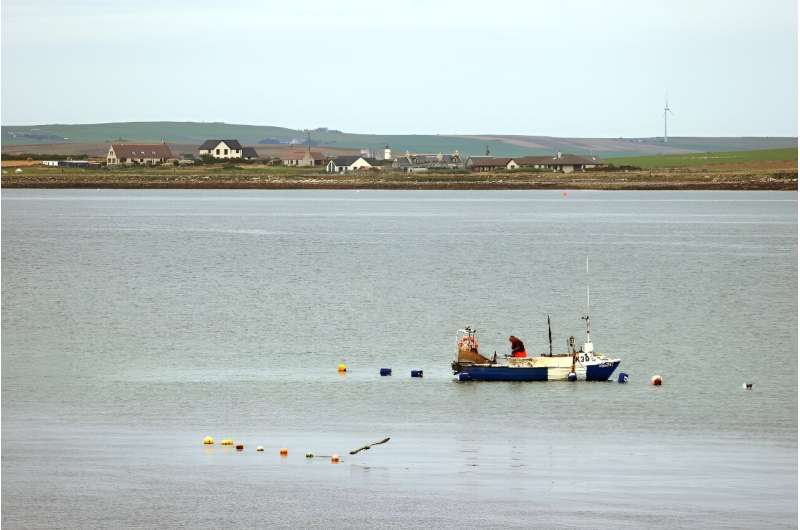This article has been reviewed according to Science X's editorial process and policies. Editors have highlighted the following attributes while ensuring the content's credibility:
fact-checked
reputable news agency
proofread
UK diving team hail suspected WWI warship find

A team of UK divers has hailed the discovery of a wreck off Scotland believed to be a Royal Navy warship sunk during World War I but still "virtually intact".
The team found what it thinks is HMS Hawke—which sank after being hit by a German torpedo in October 1914—in the North Sea earlier this week.
Paul Downs, who was among the divers and filmed footage of the long-lost wreck, described it as "a once in a lifetime" discovery given its "unbelievable" condition.
"She is virtually intact," he told AFP. "The state of preservation is unbelievable for a wreck that's 110 years old and came to a violent end."
"Lost in Waters Deep", a group which searches for WWI shipwrecks in Scottish waters, spearheaded the years-long effort to find the warship.
The team is now awaiting official confirmation from the Royal Navy after providing it with their findings.
'Top quality'
Only 70 of HMS Hawke's crew survived, while more than 500 died, after it was attacked by a German U-boat in the early months of WWI.
The warship, an Edgar-class cruiser first launched in 1891, was 387 feet (118 meters) long and 60 feet wide.
It caught fire, exploded and then disappeared beneath the murky waters of the North Sea off northeast Scotland in less than eight minutes.
The vessel has rested on the seabed—360 feet down—ever since.
Downs said that depth likely played a role in preserving it.
Its guns, other armaments, decking and some interior features like a clock and wall-mounted barometer were all still visible, despite more than a century on the seabed.
"It avoids the storms that the North Sea will get during the winter," Downs explained.
He noted the warship had also been built with "absolutely top-quality" materials at the height of the British empire.
"All the brass work on the wreck, like the portholes and the breaches for the deck guns, are all still shiny... it's probably due to the fact that she was just built so well."
'Controlled wreck'
Lost in Waters Deep spent years pinpointing where it suspected the warship had sunk, including researching the U-boat commander's journal and the logs of other Navy cruisers that had been in contact with it.
The team was also helped by a report of a seabed "obstruction" reported in the 1980s—though the wreck was actually found a kilometer away from that.
HMS Hawke was one of the first Royal Navy vessels lost in the conflict, as Britain's fleet initially struggled to adapt to the threat of German U-boats.
"Historically, she's very significant," noted Downs.
He predicted the wreck could not be successfully salvaged after so long sitting on the seabed, but the final decision would be down to the Royal Navy.
"I would imagine that she will become a controlled wreck, so she'll be classed as a war grave.
"So at some point in the future, you may be able to dive, but just not touch anything.
"It's basically an archaeological site. So everything's filmed and photographed and left in situ."
The Royal Navy told UK media it appreciated the efforts made to locate the wreck.
"Once the evidence to support this find is received, it will enable our historians to formally identify the wreck," a spokesperson said.
© 2024 AFP





















